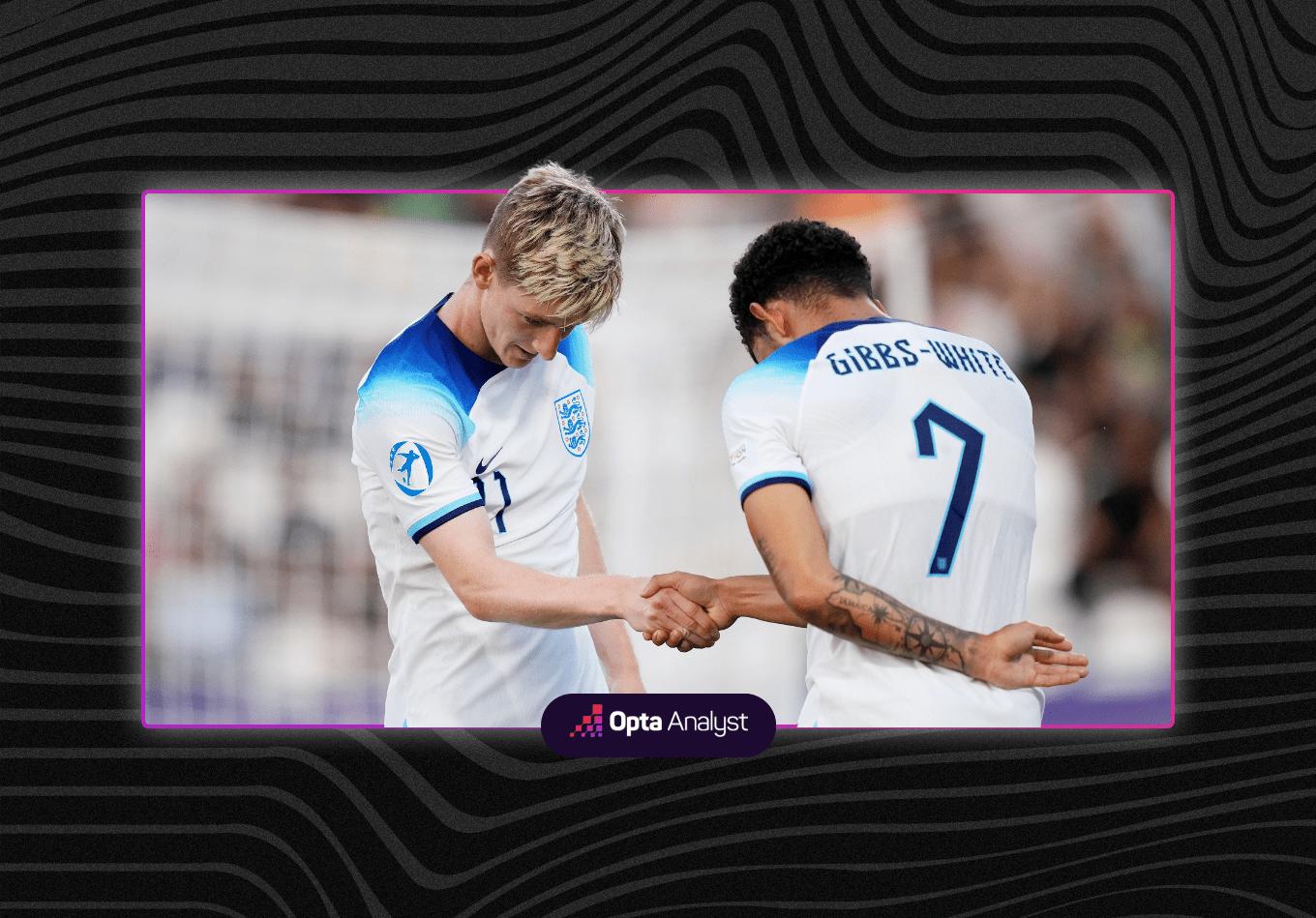Three of the four goals scored following the longest passing sequences at the 2023 U21 European Championships have been scored by England. That encapsulates just how far England’s style has progressed in recent years.
It’s 2014. England’s senior side are playing Uruguay in their second group stage game at the World Cup in Brazil. Joe Hart’s first touch of the game with his feet is to launch the ball long up to Danny Welbeck. It’s overhit and England lose possession.
It’s 2023. England’s U21 side are playing against Israel in their second group game at the European Championships. England and Manchester City goalkeeper James Trafford’s first involvement of the game is to receive a backpass inside his own six-yard box. Under pressure, he controls the ball, waits patiently, and plays a short pass into the feet of Curtis Jones who has dropped deep to receive. England retain possession.
Ten minutes later, Chelsea’s Levi Colwill plays a short goal kick to Trafford who is again stationed within his own six-yard box. Again, he waits. This time it’s the other central midfielder, Angel Gomes, who drops deep to receive a short pass. Twenty-one passes and a minute later, Morgan Gibbs-White crosses to Anthony Gordon to open the scoring. Not a single Israel player had touched the ball.
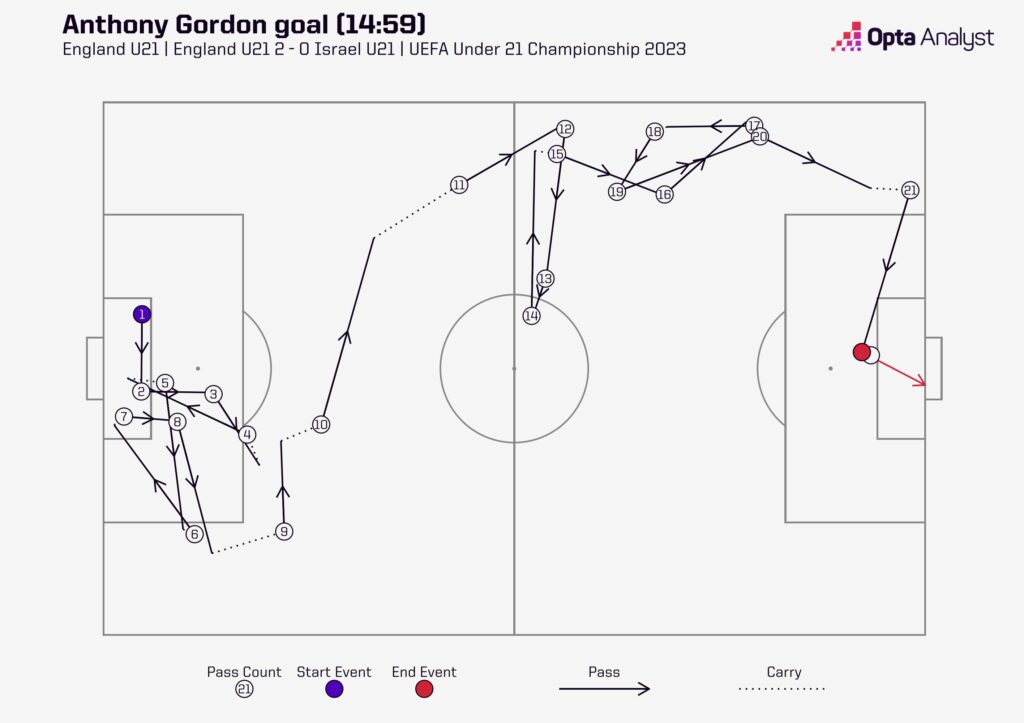
Midway through the second half, Trafford is again involved at the start of an England attack. Again, it’s short to Jones. Twenty-one passes later, and Emile Smith-Rowe has doubled England’s lead.
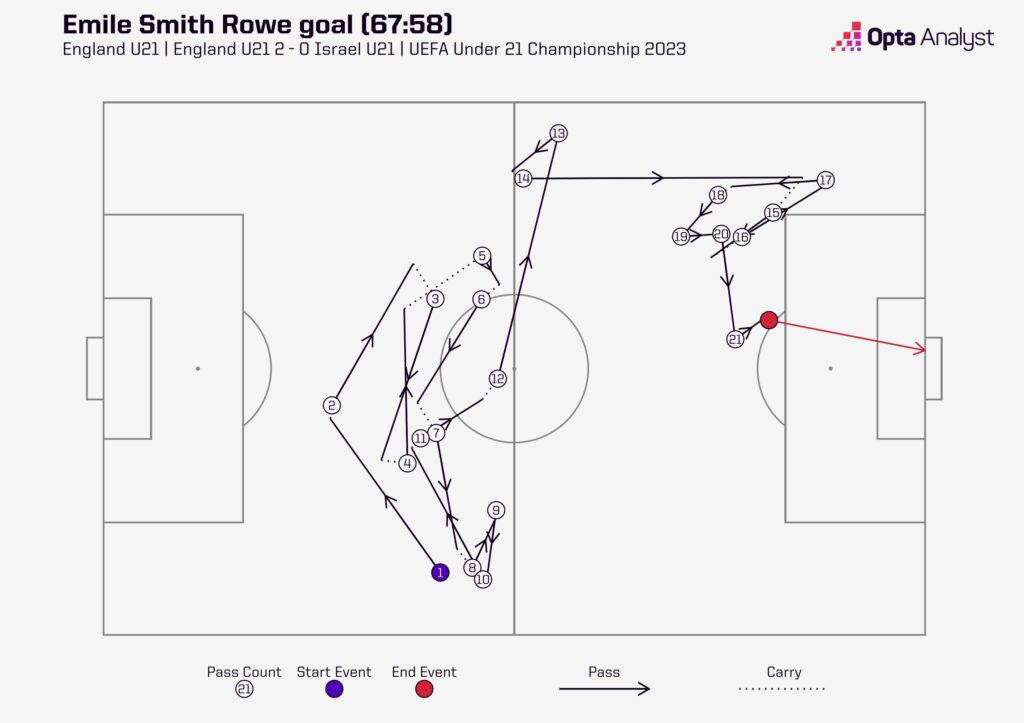
From Joe Hart to James Trafford. In less than a decade, moments like these show how much football has evolved as a sport. And, pertinently, given England’s U21 side is on the cusp of a final, how much England’s playing style has also evolved in those years.
The mindset has changed. On both the men’s and women’s side, England now enter major tournaments with expectation rather than hope. They are the protagonists rather than the side character.
And their attitude towards possession offers a glimpse into that change.
In the U21 European Championships taking place right now, England are the only side to have held onto the ball for five or more seconds on average per open play sequence. Their average sequence time of 15.7 seconds is over two seconds longer than the next best team (Spain at 13.4) and only Ukraine (0.8) have progressed the ball upfield at a slower rate than England’s 1.1 metres per second.
Those statistics paint the picture of a team extremely comfortable in possession, patient in build-up and confident in their own superiority.
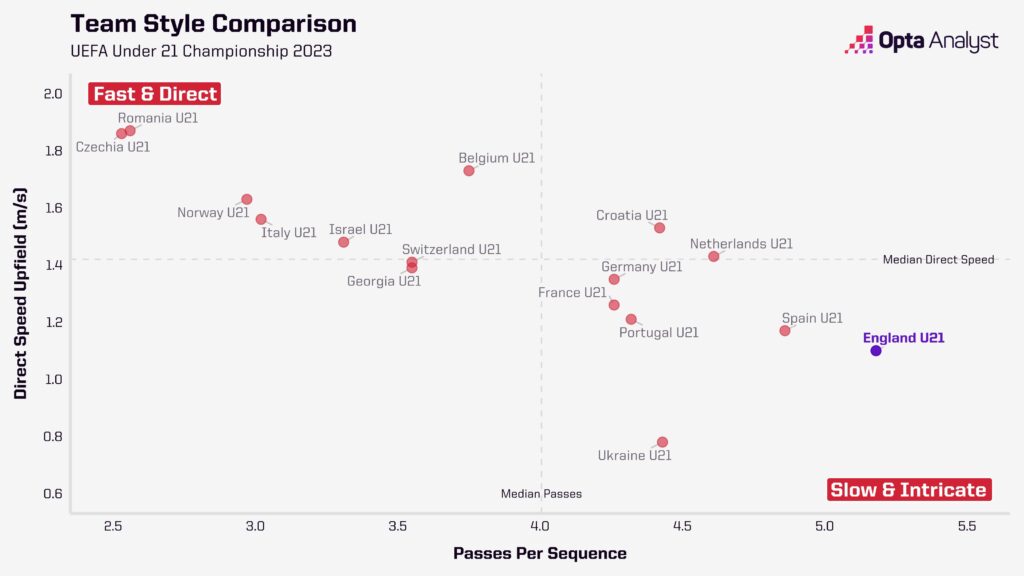
The same was true of the senior side at the World Cup last year.
Looking at the team styles visualisation below, England were very firmly in the bottom-right quadrant, showing their desire to possess the ball for long periods of time.
Only Spain averaged more passes per sequence than Gareth Southgate’s side, and La Roja were the only side to be less direct than England.
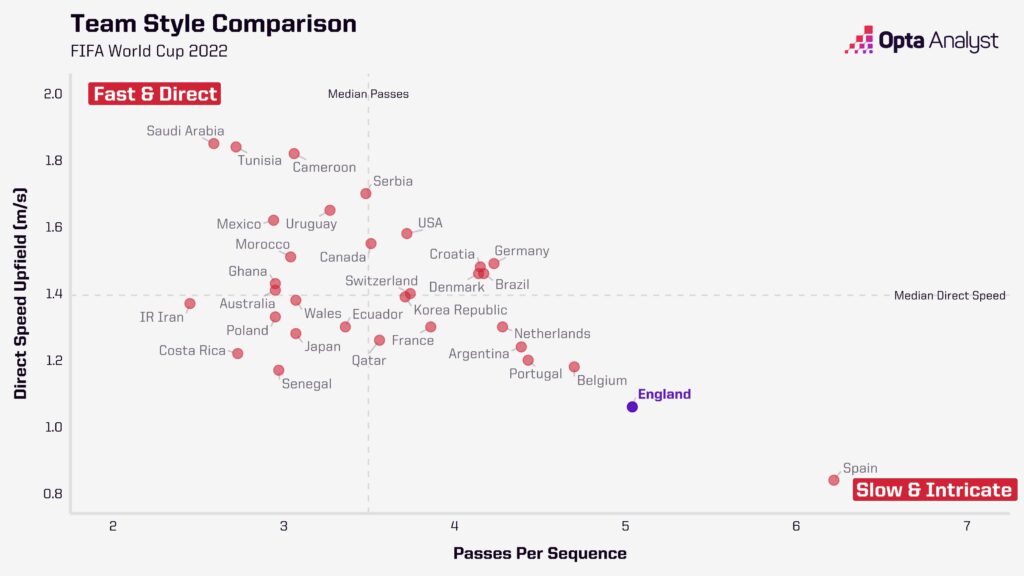
It’s easy to forget just how different it used to be.
The 2014 World Cup ended disastrously for England as they finished rock bottom of their group with just a single point. At the European Championships in 2016, there was the ignominious defeat to Iceland. With the Southgate era, those painful memories feel like a thing of the past. His record at major tournaments reads: semi-final, final, quarter-final, and he’s won more matches at major tournaments than any other England manager (nine).
Aside from the results, comparing England’s style of play in possession from Brazil in 2014 to Qatar in 2022 just shows how much England’s approach has changed.
Not only have the absolute values of these statistics increased, but also where England ranked within each tournament has risen.
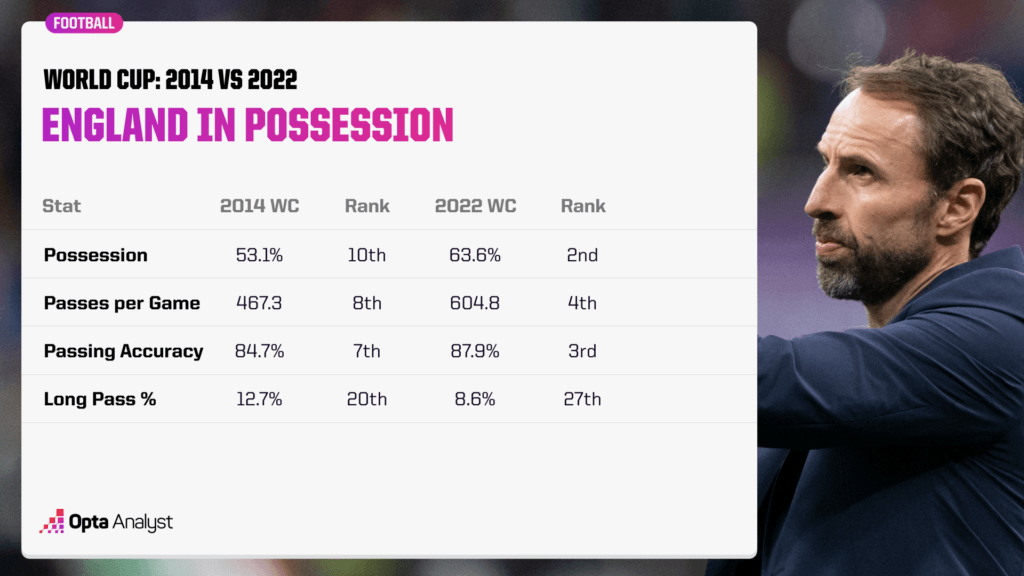
And when we add Roy Hodgson’s team from 2014 onto the team style comparison map from 2022 we can see just how far England have come.
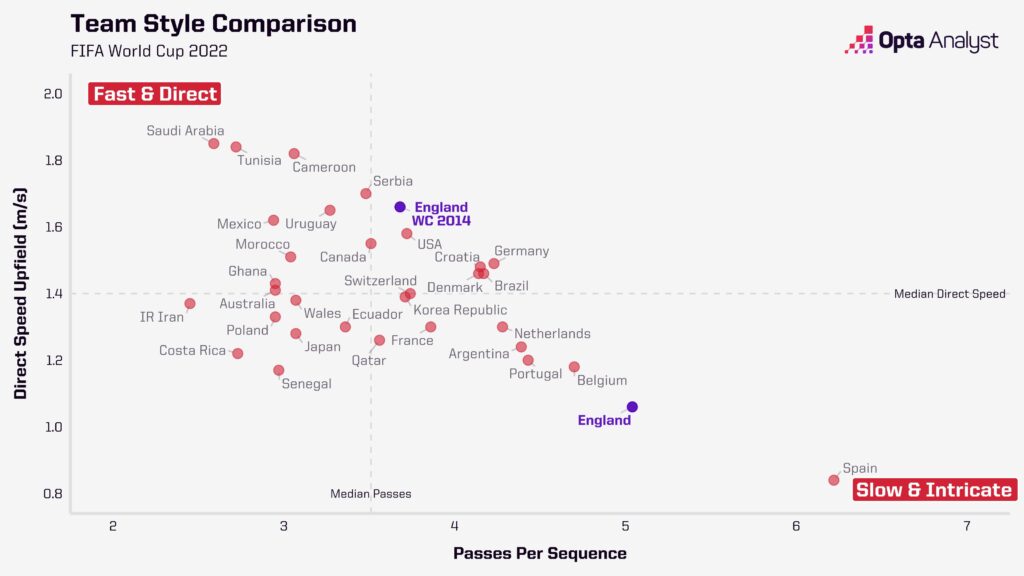
In fact, we can trace the evolution of England’s style of play further back than that. The below chart maps England’s playing style throughout international tournaments since Euro ’96.
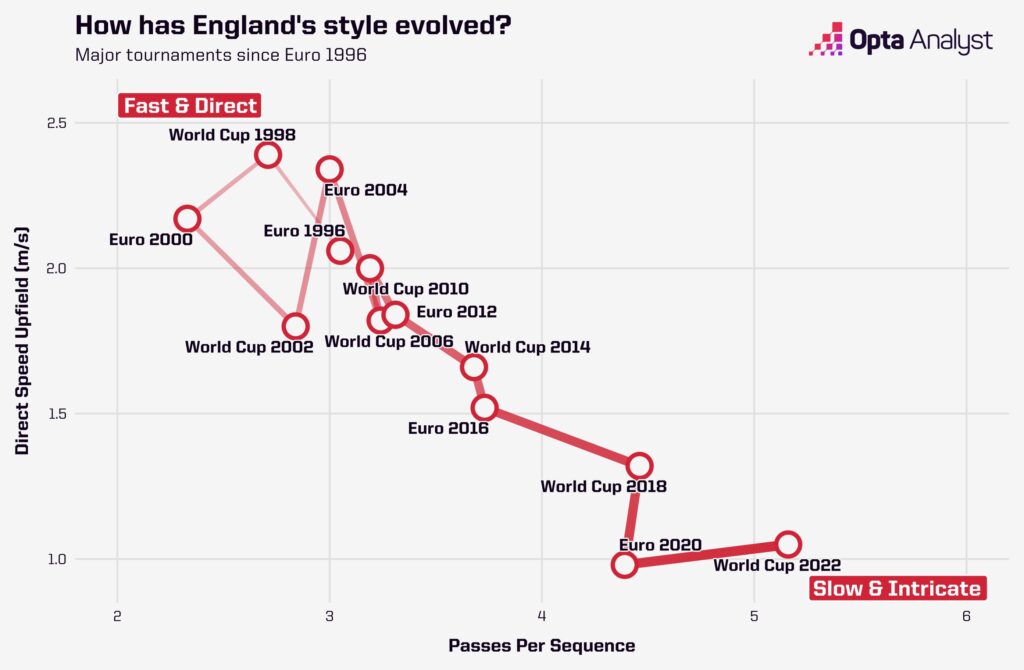
Lee Carsley’s U21 Young Lions are doing similar in Romania and Georgia. Only Spain (647) have averaged more passes per game than England (562), and only the Netherlands (6.5%) have played a lower percentage of their pass long (England – 7.5%).
Whether the Young Lions can go all the way remains to be seen. They have a semi-final to navigate against Israel tomorrow evening, a match in which they are heavy favourites to win. A final clash against Spain looks likely.
Even if they don’t go onto win the whole thing, the England U21 squad is littered with young, top-flight talent. And they perfectly embody the change in England’s playing style.
Gareth Southgate – and whoever proceeds him – can be very confident about the future of the national side.
Enjoy this? Subscribe to our mailing list to receive exclusive weekly content. And follow us on Twitter too.
